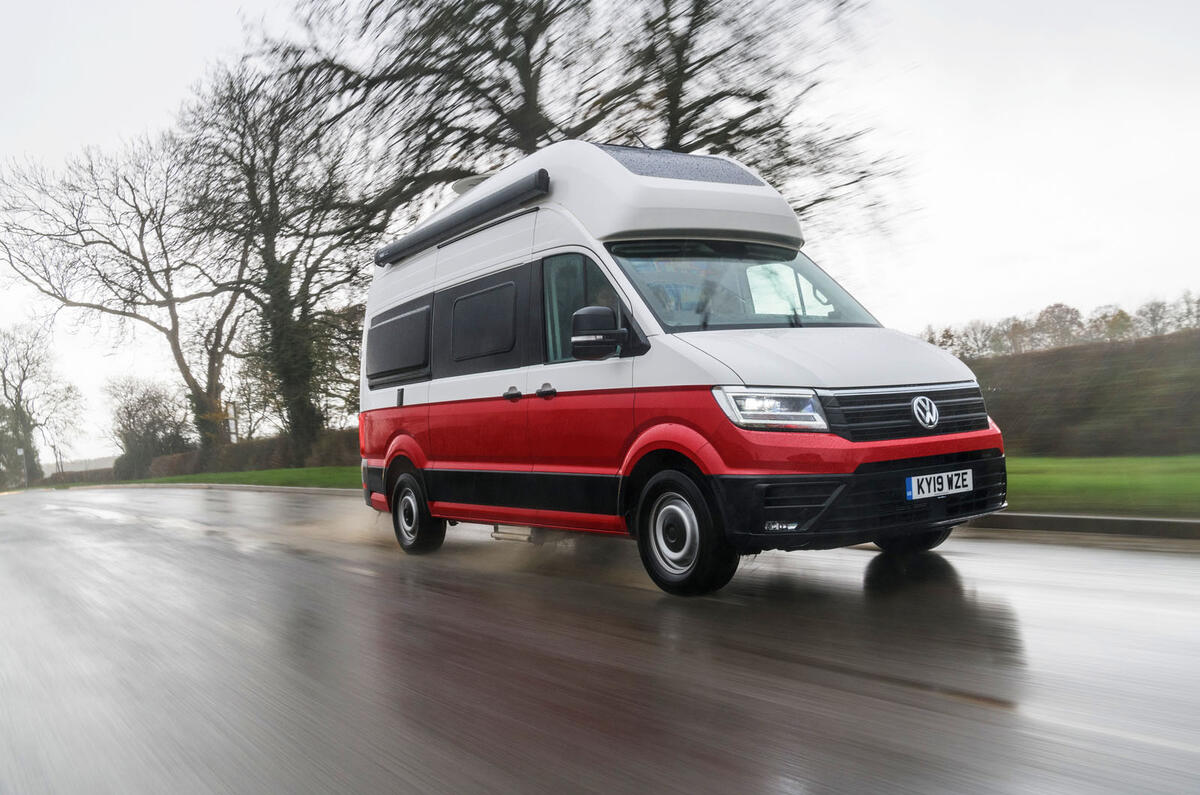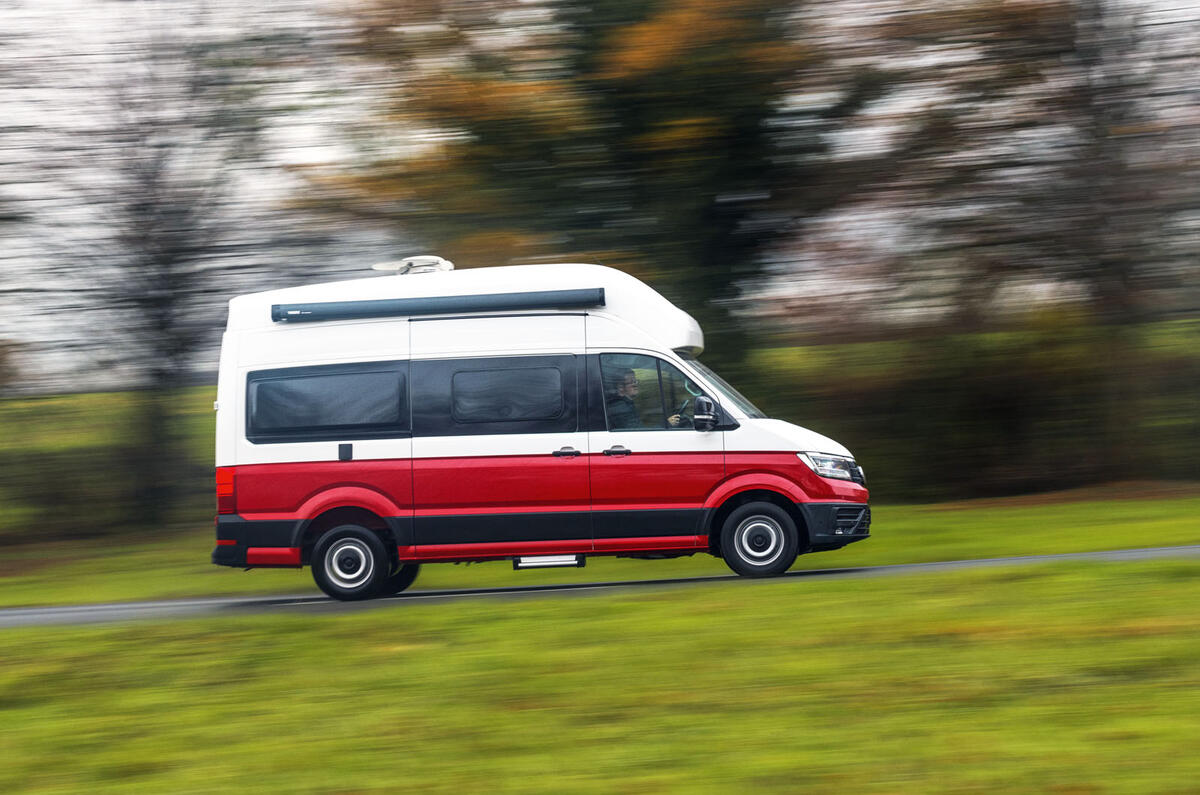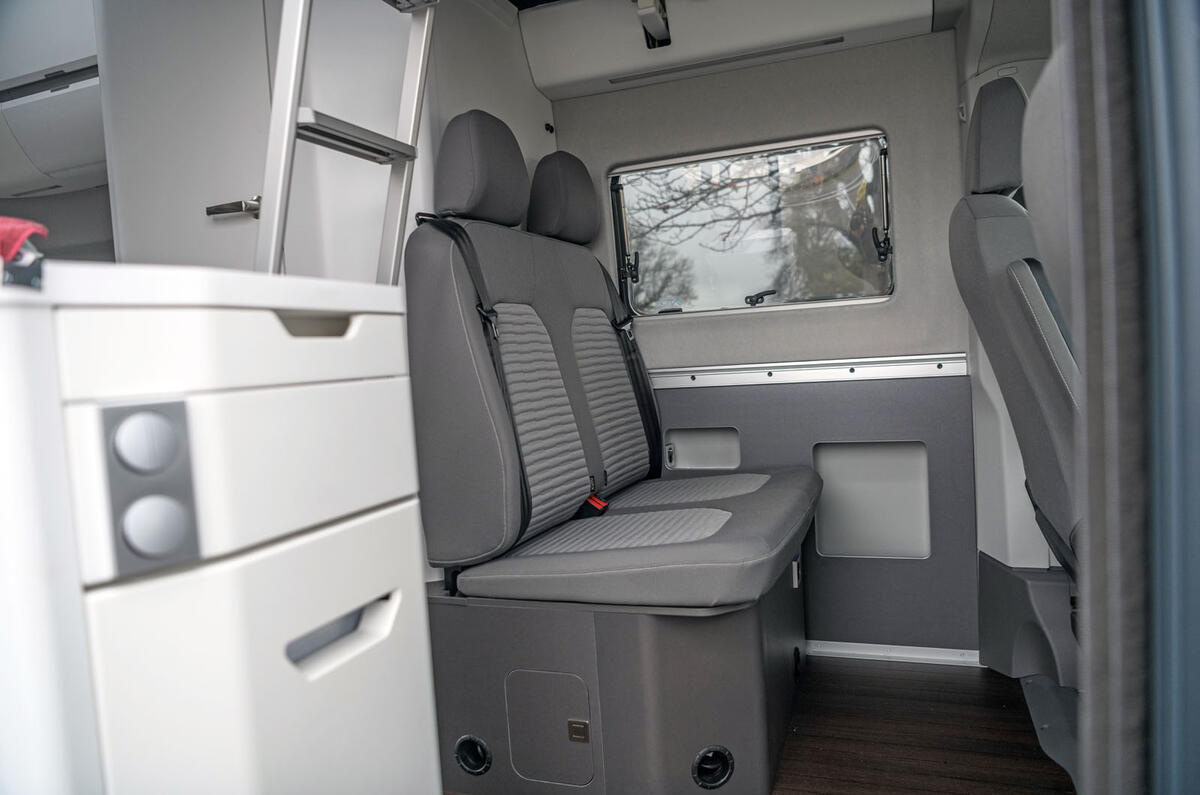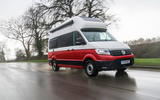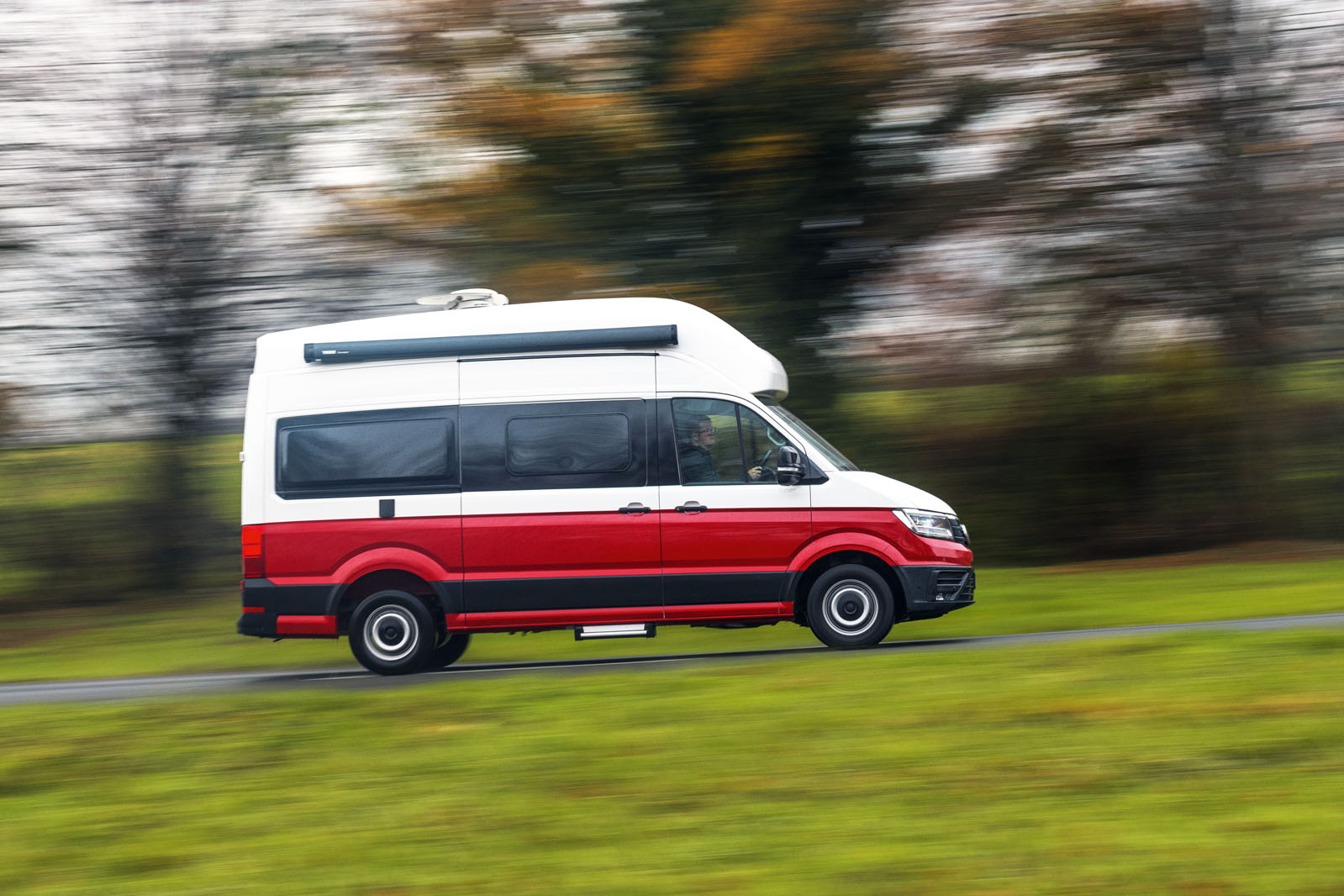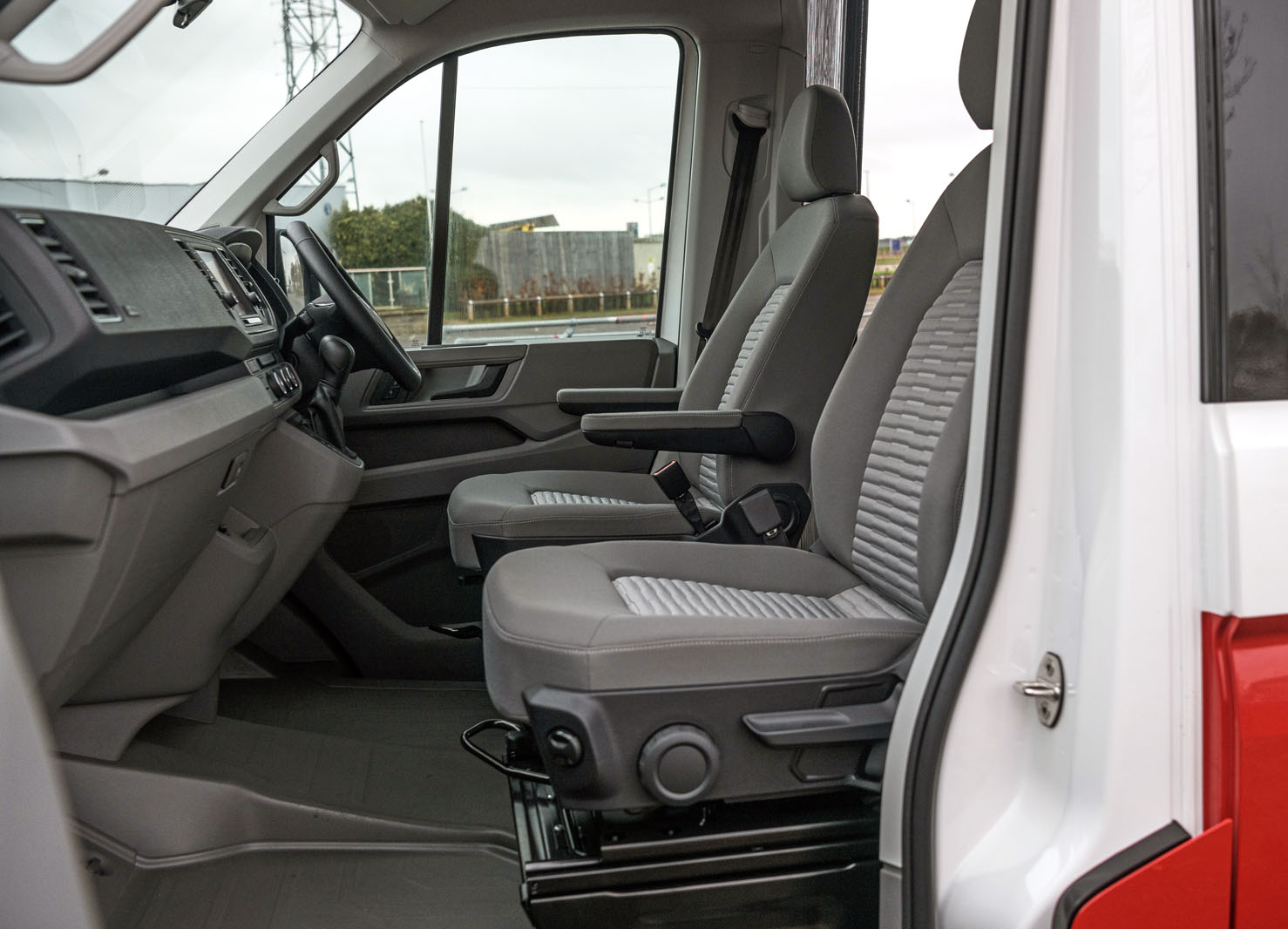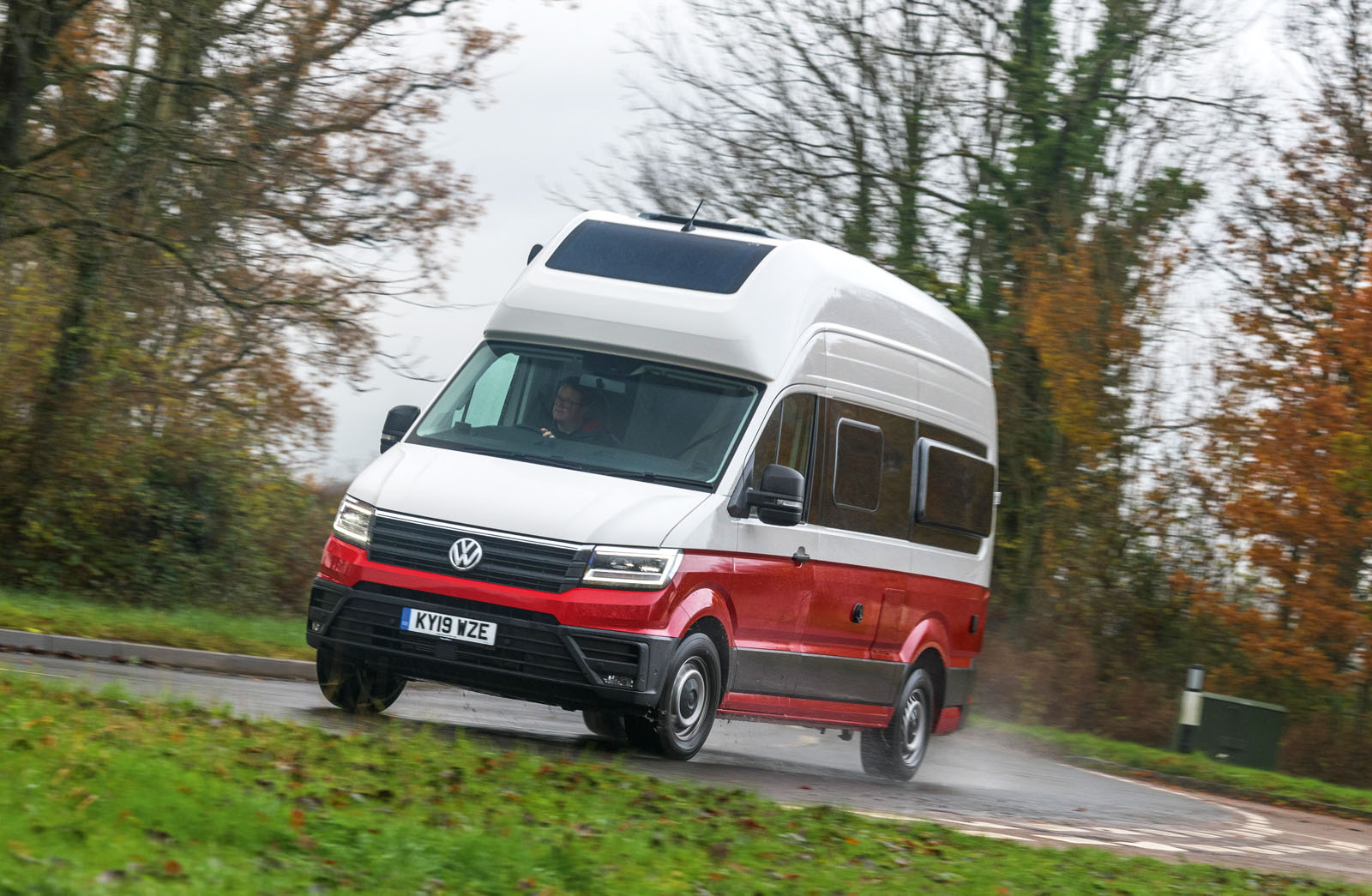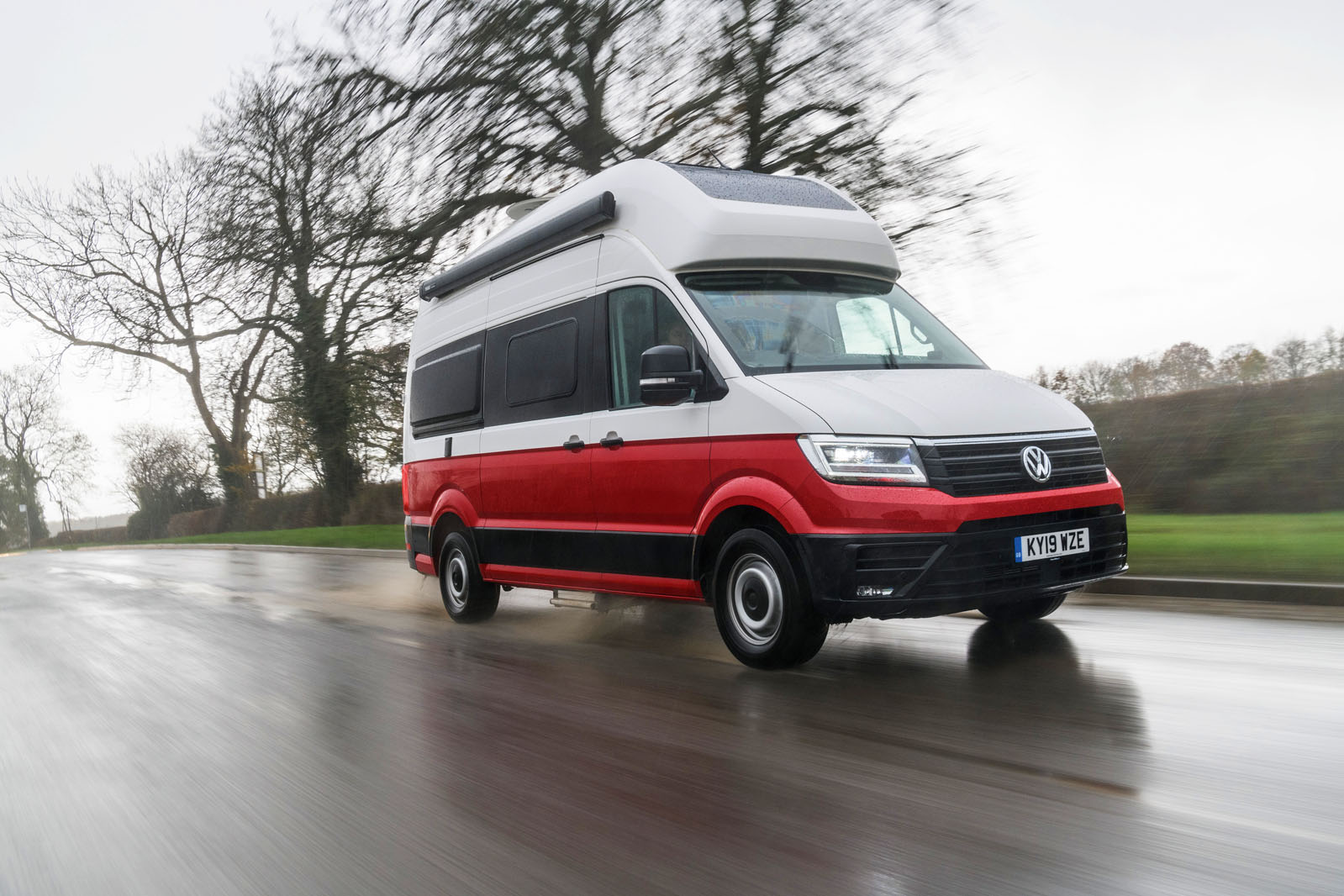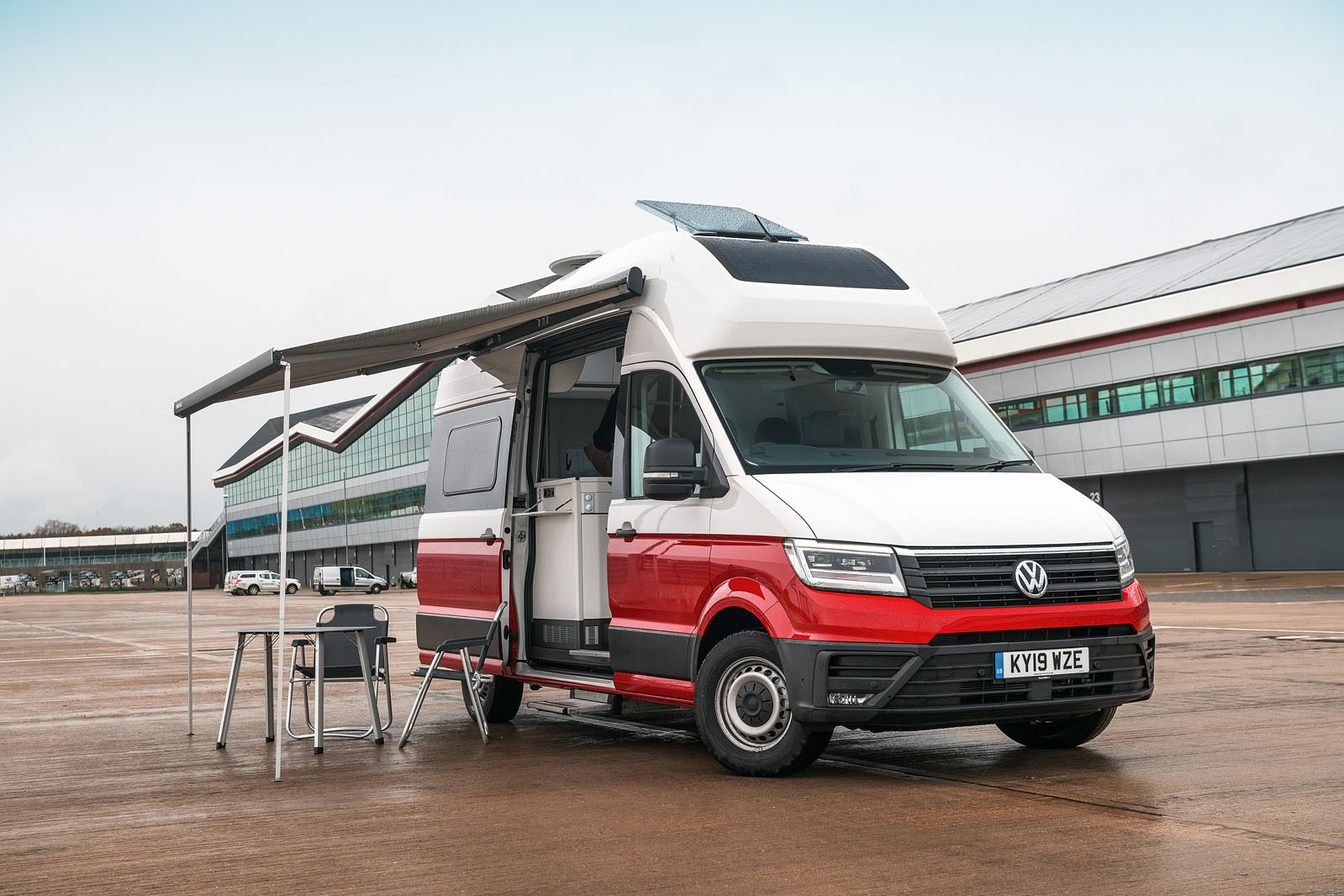Access to the inside of a parked Grand California will typically be granted by the vehicle’s large offside sliding door, where a motorised step slides automatically outwards to help you on your way in. Once inside, you’re not immediately struck by the sheer expanse of space you find – and while there are reasons for that, whether you judge them to be good reasons or not may depend on how much you like sharing a loo.
Immediately in front of you, there is a two-seat rear bench seat that, via the addition of a small table and a swivel of the front seats, can become part of a four-seat dining area. Heading rearwards from there, though, your sense of space is intruded upon somewhat by the kitchenette (a two-burner cooker top, sink, worktop and refrigerator compartment) that runs opposite a fully fitted ‘wet room’.
The inclusion of a ‘wet room’ breaks new ground for any VW California and means owners needn’t be tied to camping sites with toilet and shower facilities but can roam more freely abroad. For size, it’s more water closet than wet room, but given the impact it has on wider available space in the car, you wouldn’t want it to be bigger.
It’s certainly a cleverly configured and usable space, though, the shower drawing water from a 110-litre on-board fresh water tank and draining into a 90-litre waste tank. The main bed at the vehicle’s rear, meanwhile, is comfortable and of the most useful size for two adults sleeping transversely. That it can’t more easily be folded away during the day is one of the other reasons that space could be a little more economically utilised inside the Grand California. However, the same can’t be said of the optional over-cab berth, which slides out and away very neatly, although it’s only really big enough for a smaller adult or a couple of children sharing.
Move forwards from the main sliding-door access area where we began and you’ll find a driving environment that offers plenty of occupant space, has fine comfort levels and is very well served for storage areas. It doesn’t quite match the impressive perceived quality levels of the living quarters (which have classy-looking white fitted cupboard doors and ritzy ambient lighting strips) but it doesn’t let the side down, either, and includes instrumentation, trip computer and infotainment systems, which all impress for clarity, functionality and usability.
However, parents of younger children may be interested to read that Isofix-equipped or not, the relatively narrow rear bench would be at a squeeze to accommodate bulkier child seats next to each other.
The Grand California’s infotainment system is something of a rarity among Autocar road test subjects: a multimedia set-up that isn’t upgradable at extra cost. It’s Volkswagen’s familiar Discover Media navigation system with an 8.0in colour touchscreen and comes with four speakers up front, Bluetooth, voice control and App-Connect (which brings with it smartphone mirroring, of course). It looks great, works well and seems to hold its own in a £70,000 vehicle with pseudo-premium positioning.
And it’s not the only touchscreen display or music source in the village, either. Farther aft, a similarly sized wall-mounted tablet is your route to adjusting cabin heating and ventilation, or deploying the roof-mounted satellite dish, Thunderbirds style. And farther aft still, optional Bluetooth speakers around the bigger double bed mean someone at one end of the vehicle can listen to an entirely different choice of music from someone at the other. (Pity the grandparents in between.)



